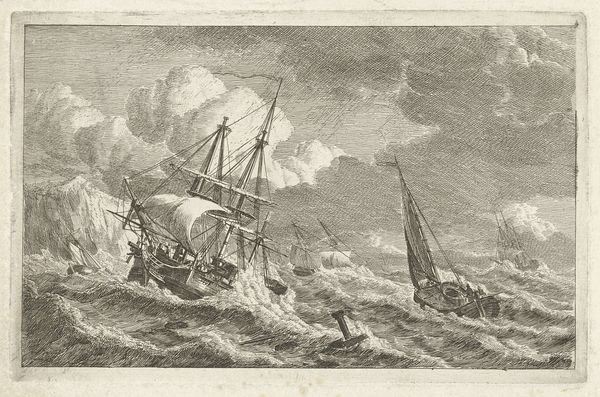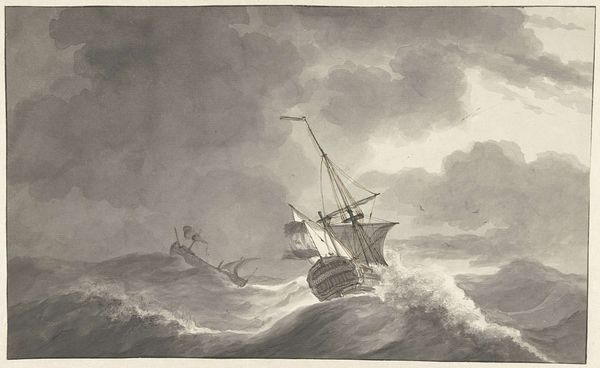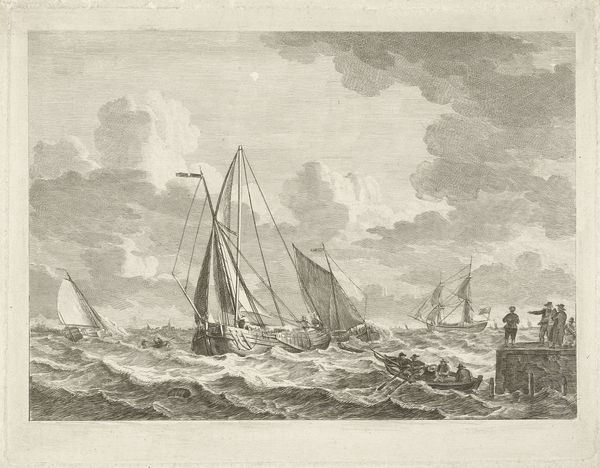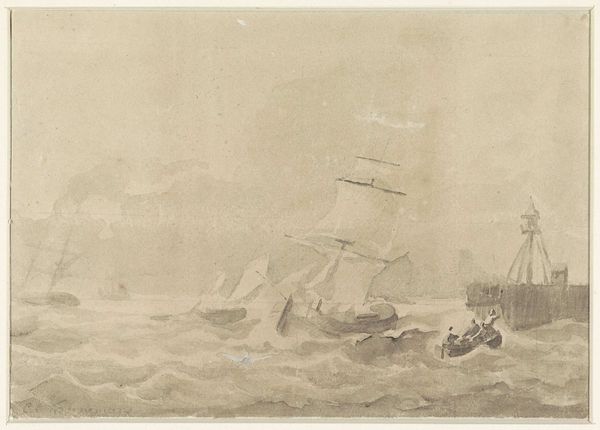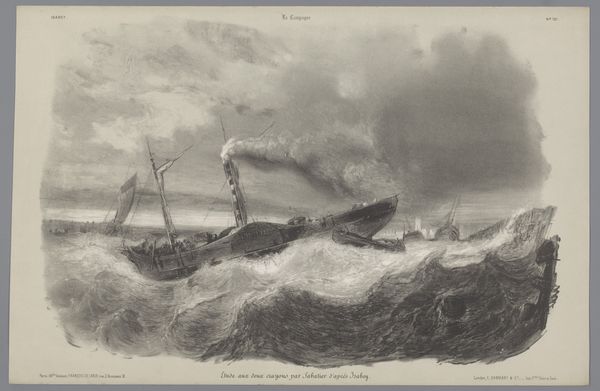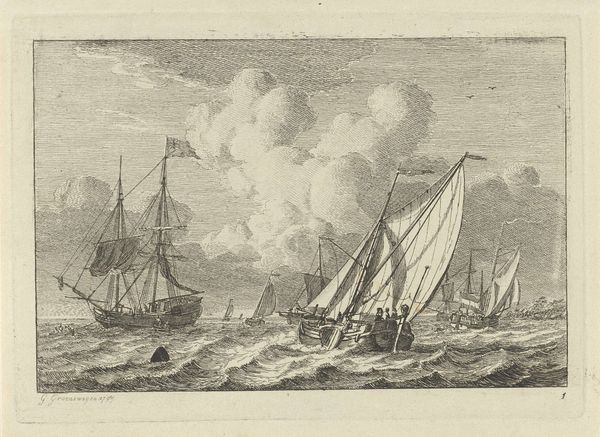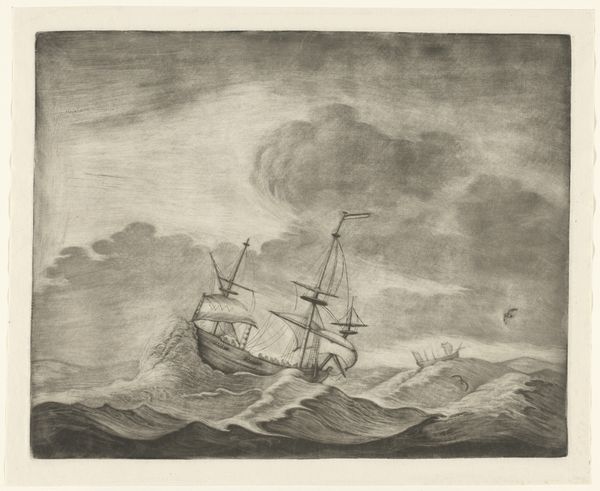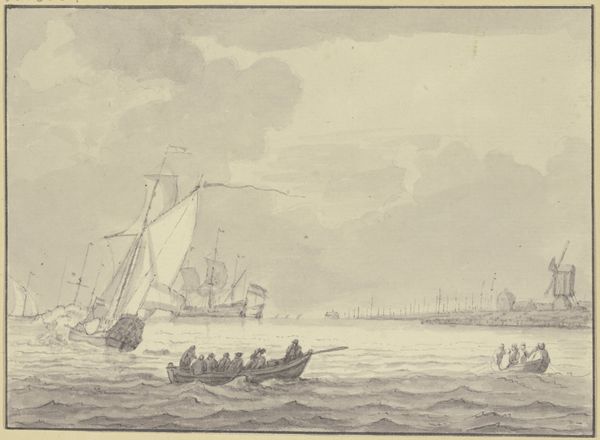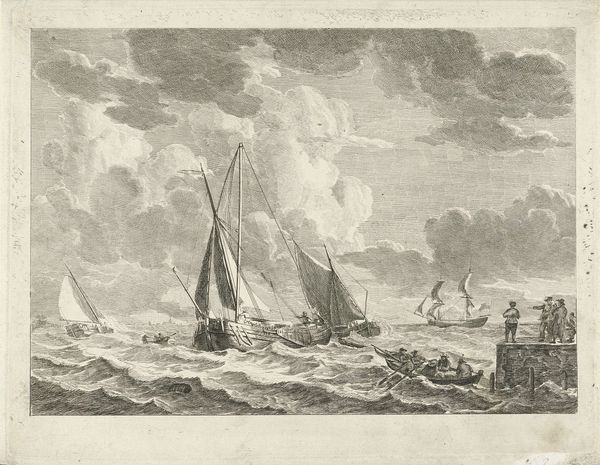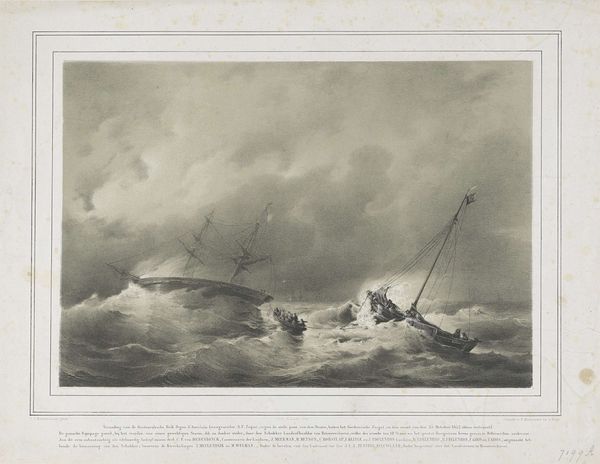
Het vergaan van het schip De Unie onder kapitein Graaf van Welderen op de Noordzee, 19 oktober 1782 1782 - 1784
0:00
0:00
Dimensions: height 378 mm, width 497 mm
Copyright: Rijks Museum: Open Domain
Editor: This engraving from 1782-1784 by Ary van Wanum depicts ‘The Wreck of the Ship De Unie Under Captain Count of Welderen on the North Sea, October 19, 1782.’ It has a gloomy and catastrophic feeling, with ships battling stormy waves. How do you interpret this work in terms of its historical and social implications? Curator: This piece resonates powerfully when viewed through a critical lens focused on power, maritime trade, and the human cost of ambition. It commemorates a disaster, yes, but consider also the historical context: the Dutch Republic's position within global trade networks, its reliance on maritime power, and the potential exploitation inherent in such ventures. What voices are silenced in this depiction of a 'heroic' shipwreck? Editor: I see your point about silenced voices. So, beyond the immediate disaster, you’re suggesting it reflects broader power dynamics? Curator: Exactly. It invites us to consider how historical narratives, especially those memorialized in art, often serve to legitimize existing power structures. Who commissioned this engraving, and what purpose did it serve in shaping public perception of Dutch maritime dominance and national identity in that era? Editor: That’s fascinating. I hadn’t considered the role of art as a tool for reinforcing power. What can art contribute to critical discourse on historical events and social issues? Curator: Art possesses a unique ability to engage with our emotions and challenge conventional viewpoints, providing a platform for dialogue and potentially inciting action toward justice and change. What would it mean to reclaim these images for a more inclusive historical understanding? Editor: That makes me rethink how I initially saw the artwork. Instead of just a depiction of a shipwreck, it becomes a starting point for a discussion about the Dutch Republic’s complicated colonial and political legacy. Curator: Precisely! The goal isn't to erase or negate the artwork's aesthetic qualities but rather to use its existence as a bridge for critical discussions about its wider implications.
Comments
No comments
Be the first to comment and join the conversation on the ultimate creative platform.
